June 8 – July 2, 2010
Although the dry season weather has set in, there are still significant quantities of moisture floating around. It’s chilly and overcast most of the time; the sun only comes out occasionally. But despite this, it also sprinkles every once in a while. Some have described it as an invernillo, a mini-winter (rainy season). Most would say the weather has been unusual.
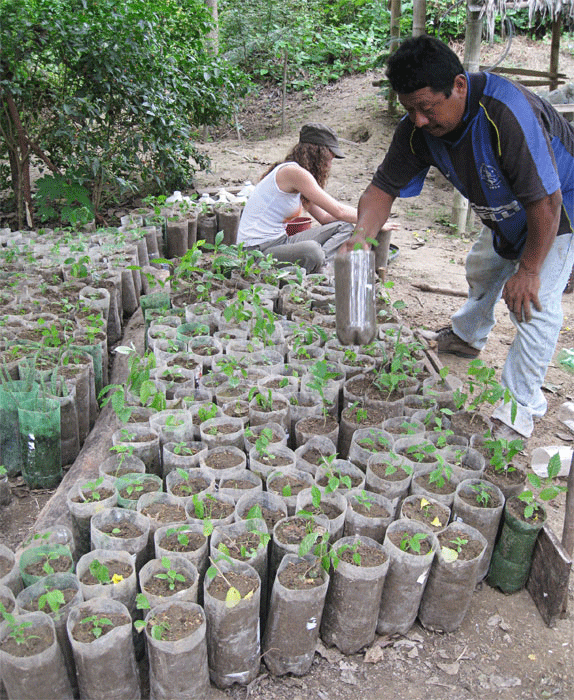
In the course of the past three weeks, we’ve been visited by two returning pairs of volunteers. First off, Laura and Paress came back after two months in Argentina to spend a week with us before going home to the U.S. And William and Jaime of Sage Educators made a last minute, two-week trip, now their third year in a row, to get out of the office and see how the trees in Ecuador are doing. So just when things had slowed down a bit, we got a burst of help.

The past three weeks could be described as stock-piling supplies in the greenhouse. Large quantities of bottles, fertilizer, and rice shells (hulls) were obtained to keep things running smoothly. In Ecuador, if you get an opportunity to complete a task, it’s best to take full advantage of it. In reality, we were running desperately low on these key components of the greenhouse work, and there were seed beds bursting with seedlings that needed to be transplanted.
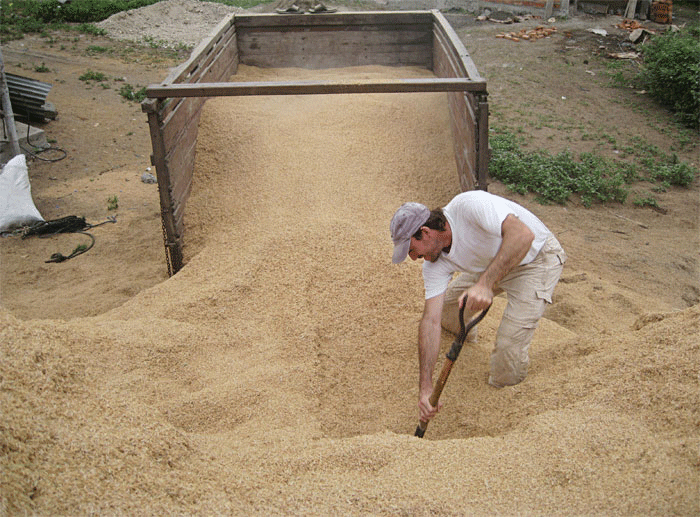
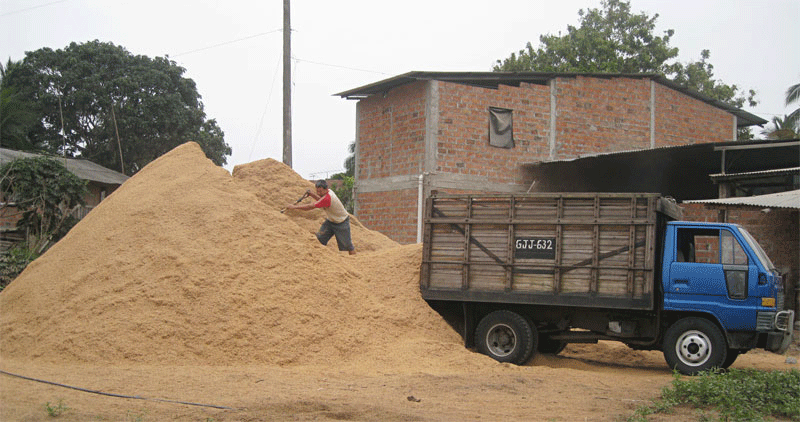
Also, each Friday for the past three weeks, a different group of Bioregionalismo students visited the greenhouse to learn more about soil and trees and to get their hands dirty for an afternoon. Much of our time has been preparing supplies at the greenhouse for them. Each group filled over one hundred bottles with soil and transplanted trees into them.

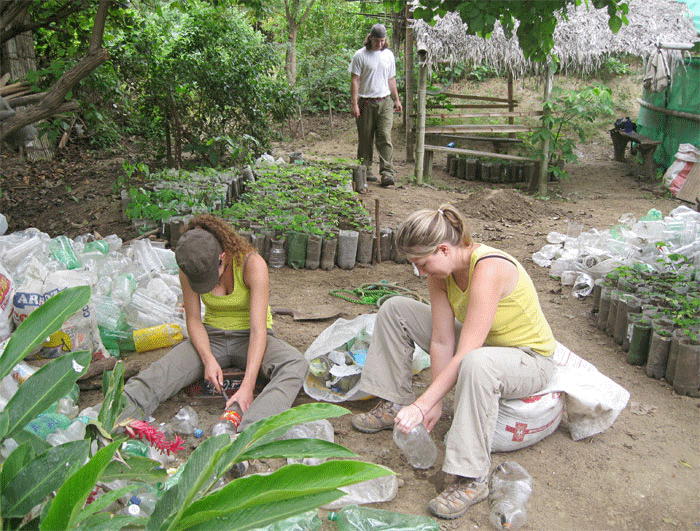
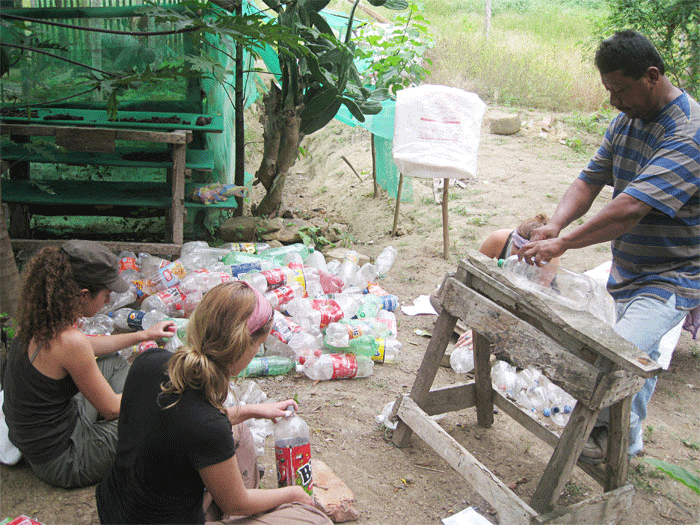
In preparation for these visits, we collected and mixed soil and collected and cut bottles. Our soil mixture lately has included dark soil from the hillside. Locally this is referred to as ‘tierra negra’. It is high in clay, but also has lots of nutrients. Since it is very similar to the prevailing soil in the area, it is good for the adaptation of the trees. Then we boost the nutrient level with compost from the greenhouse (or from Ricardo’s farm depending on supplies). River sand is added to increase water filtration. And finally, we now also add a significant portion of rice shells, which help with aeration, water retention and filtration.

Because we have been scouring the city lately for three-liter bottles, and we desperately needed a significant amount more, we decided to visit the beach to see what we could round up there. Fortunately, Chino, our trustworthy driver and vehicle of choice, frequently makes trips along the beach to get sand from Chirije, where he works. We took advantage of one of these trips for bottle collecting. It was so successful, we decided to repeat it. Each trip resulted in approximately 400-500 bottles.
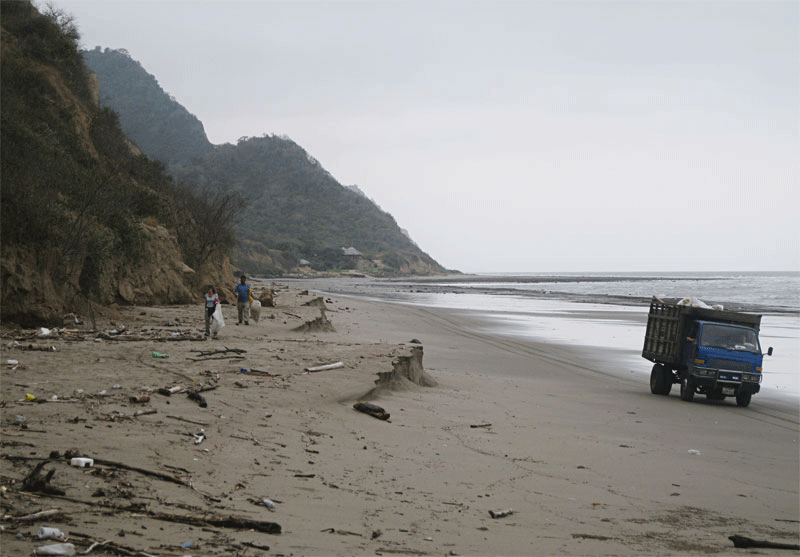

The influx of bottles allowed us to transplant more baby Pechiches from el Astillero, begin to transplant nearly 500 Guachepeli that have germinated in a single seedbed in the greenhouse, and will get us going on another blockbuster seedbed of Chirimoya.

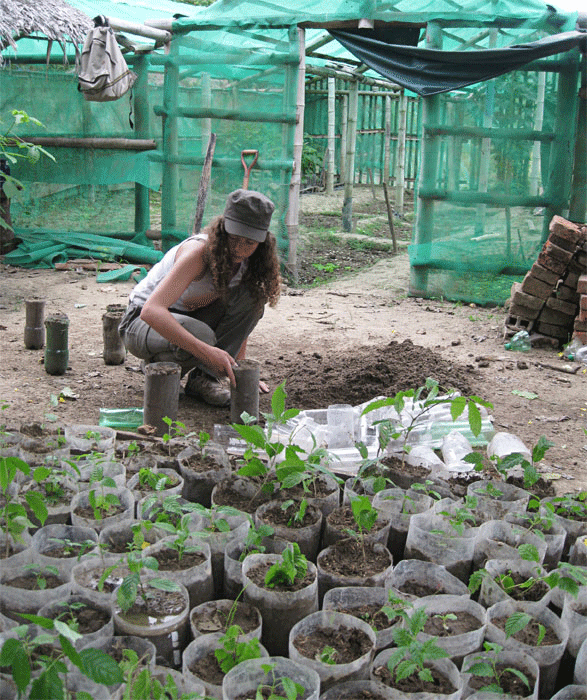

Since there are three classes of Bioregionalismo that operate at the same time, and each Friday they take a field trip to a different location, we also had students visiting some of the revegetation sites.

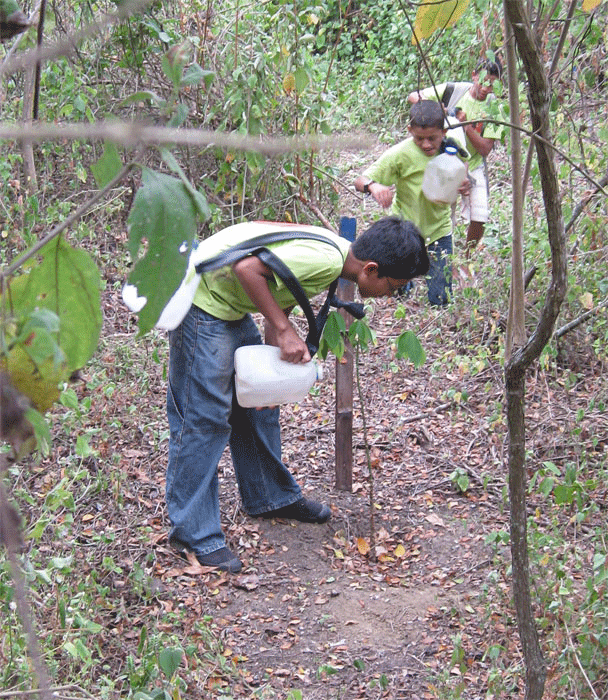
This provided impetus for us to revisit these sites and make sure the trails and trees were clear of weeds. The El Toro site, Empacadora, Williams and Jorge Lomas sites were all cleared of weeds. Bioregionalismo students watered trees at the Williams and Jorge Lomas sites. While the trees don’t absolutely need to be watered quite yet, they will definitely get a boost from the extra H2O, plus it is a fun activity for the kids.
The final piece of news is that we have begun work at the Fanny de Baird middle/high school constructing three seedbeds. The idea of this is to give another activity for the Bioregionalismo students to work on, but it has quickly become an interesting mix of Planet Drum’s projects.
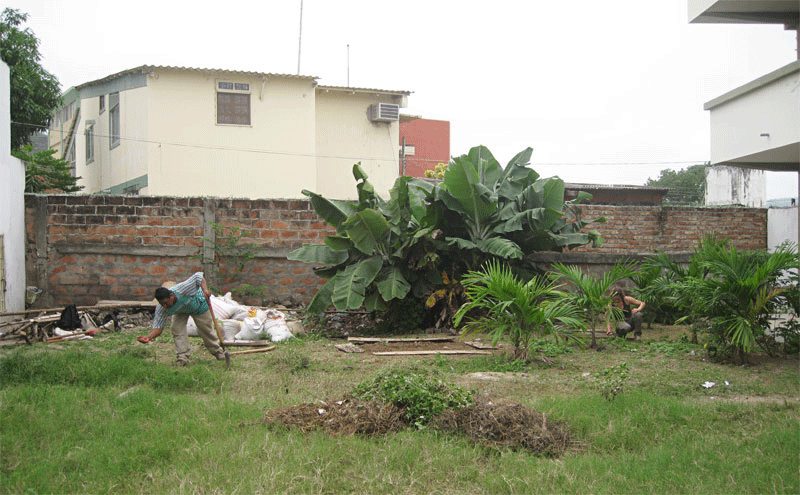
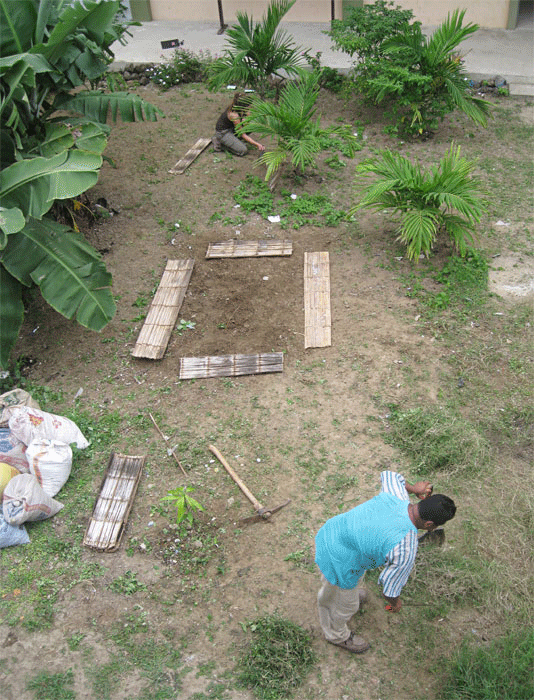
It is the first time we will be growing seedlings outside of the greenhouse. The students (and teachers) are clearly very interested and come to watch and ask questions during recess and in-between classes. The plan is to focus on planting fruit-producing species so that the children (and teachers) have an increased incentive to plant and care for the plants as they grow. Whatever germinates, we will be experimenting with new (for us) species. They will be transplanted and given to whoever helps for them to plant wherever they desire. I’m not sure what the results of this project will be, but I’m excited to see what happens.

The first day, Bamboo for a fence and the frames of the raised seedbeds was dropped off at the school, along with sacks of dirt, fertilizer, sand, and rice shells for mixing soil. The second day, we cleaned up the area the school has allowed us to use for the project and assembled three seedbeds. We still need to construct the fence and mix soil to fill the beds.
Pásalo bien,
Clay

Reader Interactions